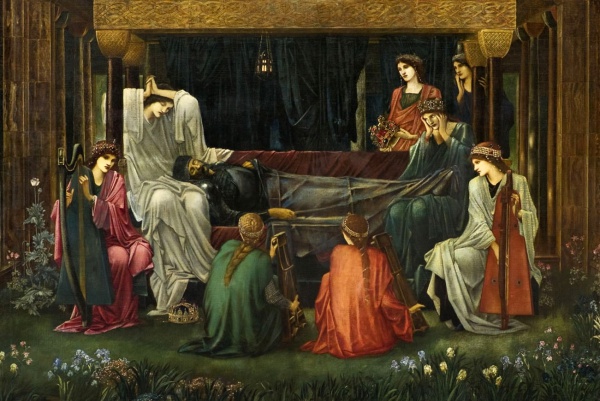Facts About The Last Sleep of Arthur in Avalon (detail)
"The Last Sleep of Arthur in Avalon" is a renowned painting by Edward Burne-Jones, begun in 1881. This monumental artwork, measuring 279 cm by 650 cm, is often regarded as Burne-Jones's magnum opus. It was commissioned by George Howard, the 9th Earl of Carlisle, for the library at Naworth Castle.
Burne-Jones was profoundly captivated by the Arthurian legend and devoted 17 years to this painting, even while grappling with personal losses and existential reflections on life and death. The story of King Arthur resonated deeply with him, and he felt a profound kinship with Arthur's solitude. Burne-Jones even modeled Arthur’s sleeping pose on himself.
There is speculation that the depiction of King Arthur in the painting may have been inspired by Burne-Jones's close friend, William Morris. However, there is no substantial evidence that Morris posed for the painting, and it is plausible that Arthur’s likeness was rendered before Morris's health began to decline. Burne-Jones continued to refine the painting until his death in 1898, treating it as a passionate endeavor without imposed deadlines.
Following Burne-Jones’s passing, the painting changed hands several times before ultimately being housed at the Ponce Museum of Art in Puerto Rico. Although it experienced a period of diminished recognition, it was later exhibited at Tate Britain in London and the Prado Museum in Madrid while the Ponce Museum underwent renovation.
Today, "The Last Sleep of Arthur in Avalon" is still celebrated as a crucial work in Burne-Jones's career. It remains admired for its exquisite beauty and profound symbolism.
